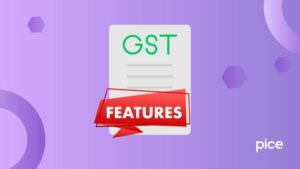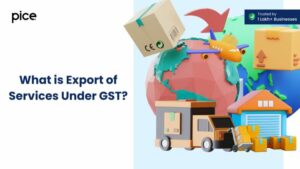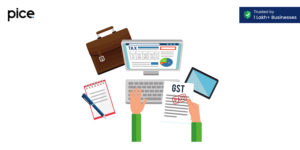GSTR-4: Return Filing, Format, Eligibility & Rules
- 20 Sep 24
- 10 mins

GSTR-4: Return Filing, Format, Eligibility & Rules
Key Takeaways
- GSTR-4 is an annual return form specifically for taxpayers registered under the GST Composition Scheme, facilitating simpler tax compliance.
- The form captures comprehensive transaction details, including taxable outward and inward supplies, applicable for small businesses opting for this scheme.
- The filing deadline for GSTR-4 is the 30th of April each year, making it essential for composition dealers to adhere to avoid penalties.
- Amendments to GSTR-4 for correcting errors are permitted in the return of the subsequent financial year, emphasizing careful initial submission.
- Late filing of GSTR-4 incurs a penalty of Rs. 200 per day, with a cap at Rs. 5,000, underscoring the importance of timely submission.
Introduction to GSTR-4
GSTR-4 is a form designated for regular taxpayers who choose the Composition Scheme under the Goods and Services Tax (GST) in India. This scheme is tailored for small businesses, allowing them to benefit from simpler tax compliance procedures by paying a fixed percentage of their aggregate turnover as tax, rather than navigating the more complex standard GST system. GSTR-4, which was once filed quarterly, is now required to be filed annually, further simplifying the process for composition dealers. This shift underscores the government's commitment to reducing the compliance burden on small businesses, making it easier for them to focus on their operations without being overly encumbered by tax-related obligations.
Deciphering Form GSTR-4
The GSTR-4 form is structured to provide a comprehensive overview of a taxpayer’s annual transactions under the Composition Scheme. It captures detailed information on taxable outward supplies to both registered and unregistered persons, inward supplies attracting reverse charge, and tax payable on these supplies. The form also includes sections for amendments to sales and purchase details previously submitted in the quarterly returns of the same financial year. Understanding the nuances of the GSTR-4 form is crucial for taxpayers, as it ensures accurate reporting of their business transactions and compliance with GST regulations, thereby avoiding potential penalties for discrepancies or omissions.
GSTR-4 Filing Deadline
The deadline for filing GSTR-4 is set as the 30th of April every year, marking the end of the annual filing cycle for taxpayers under the GST Composition Scheme. This deadline applies to the financial year just concluded, meaning that for any given financial year (April to March), composition dealers must file their GSTR-4 by the end of April the following year. It's imperative for businesses to adhere to this timeline to avoid late fees and ensure compliance with GST norms. Being aware of the filing deadline helps businesses plan their financial and operational activities accordingly, ensuring that all necessary documents and details are prepared well in advance of the submission date.
Requirements for Filing GSTR-4 via GST Portal
Filing GSTR-4 through the GST portal requires taxpayers to prepare and have several pieces of information and documents ready. Key requirements include:
- Active GSTIN: The Goods and Services Tax Identification Number (GSTIN) assigned to the taxpayer must be active and correctly linked to the business details.
- Digital Signature Certificate (DSC) or EVC: For digital authentication of the submission, the taxpayer must have a valid Digital Signature Certificate (DSC) for companies and LLPs, or an Electronic Verification Code (EVC) for other types of businesses.
- Accurate Financial Records: Detailed records of all sales and purchases made during the financial year are necessary. This includes invoices, bills of supply, and any other relevant transaction documents.
- Internet Access and GST Portal Login Credentials: Taxpayers need a stable internet connection to access the GST portal, where they will log in using their credentials to file the return.
Preparing these requirements in advance simplifies the GSTR-4 filing process, minimizing errors and ensuring that taxpayers can successfully submit their annual returns through the GST portal. Proper preparation and understanding of the portal's functionalities can significantly reduce the time and effort needed for filing.
Steps to Submit GSTR-4 Online
Filing GSTR-4 online is a straightforward process that involves several key steps, designed to make compliance as simple as possible for small businesses under the GST Composition Scheme. Here's how to do it:

- Log In to the GST Portal: Start by accessing the official GST portal. Enter your credentials to log in to your account.
- Navigate to the Returns Dashboard: Once logged in, go to the 'Services' menu, select 'Returns Dashboard' and then choose the financial year and the return filing period for which you want to file GSTR-4.
- Select GSTR-4: In the Returns Dashboard, you'll find an option for GSTR-4. Click on 'Prepare Online' to begin filling out your return.
- Enter Required Details: Fill in all the necessary sections of the GSTR-4 form, including details of outward supplies, inward supplies liable to reverse charge, and any other relevant information for the financial year.
- Calculate and Pay Tax: The portal automatically calculates the tax payable based on the details provided. Review the calculated tax, and make any necessary payments through the portal.
- Preview and Submit: Before final submission, you have the option to preview the filled GSTR-4 form. Once satisfied, submit the form using a Digital Signature Certificate (DSC) for companies and LLPs, or an Electronic Verification Code (EVC) for others.
- Acknowledgment: Upon successful submission, you will receive an acknowledgment from the GST portal, confirming the filing of your GSTR-4.
💡If you want to pay you GST with Credit card, download Pice Business Payment App. Pice is the one stop application for all your business expenses.
Eligibility Criteria for Filing GSTR-4
GSTR-4 is specifically designed for taxpayers who have opted for the GST Composition Scheme. The eligibility criteria for filing GSTR-4 include:
- Composition Scheme Enrollment: Only taxpayers who are registered under the GST Composition Scheme can file GSTR-4. This scheme is available to small businesses with an annual turnover below a certain threshold, which allows them to pay GST at a reduced rate.
- Annual Turnover Limit: As of the current guidelines, businesses with an annual turnover of up to Rs. 1.5 crores can opt for the Composition Scheme and, subsequently, file GSTR-4. This limit may vary for businesses in special category states, where the threshold is often lower.
- Business Type: The scheme is mainly aimed at small traders, manufacturers, and restaurants. Service providers (other than restaurants) were historically excluded but recent changes have allowed certain service providers to also opt for this scheme.
- No Inter-state Supply: Businesses eligible for filing GSTR-4 should not engage in interstate supply of goods or services. The Composition Scheme is designed for businesses operating within their home state.
Understanding these criteria is crucial for businesses to determine their eligibility for the Composition Scheme and the subsequent requirement to file GSTR-4.
Amending Submitted GSTR-4
Once submitted, the GSTR-4 return can present challenges if inaccuracies or omissions are discovered, as direct amendments to the return for a particular financial year are not allowed post-submission. However, corrections for any mistakes made can be accommodated in the return of the subsequent financial year. This means that if a taxpayer identifies an error in their filed GSTR-4, they must wait until the next financial year's return filing to rectify the error. It’s crucial for taxpayers to carefully review their GSTR-4 before submission to minimize the need for amendments, given the limitations on direct corrections post-filing.
Understanding Late Fees and Penalties for GSTR-4
Late fees and penalties are an important aspect of the GSTR-4 filing process, ensuring timely compliance by businesses under the GST Composition Scheme. If GSTR-4 is not filed by the due date, which is the 30th of April following the end of the financial year, a late fee is charged. The late fee for delayed filing is Rs. 200 per day of delay (Rs. 100 under CGST and Rs. 100 under SGST), starting from the due date until the date when the return is actually filed. However, there is a cap on the maximum late fee, which is set at Rs. 5,000. Understanding these fees and penalties is essential for businesses to avoid unnecessary financial burdens due to delayed compliance. It's advisable for businesses to mark their calendars and prepare well in advance to ensure timely filing.
 By
By 


















